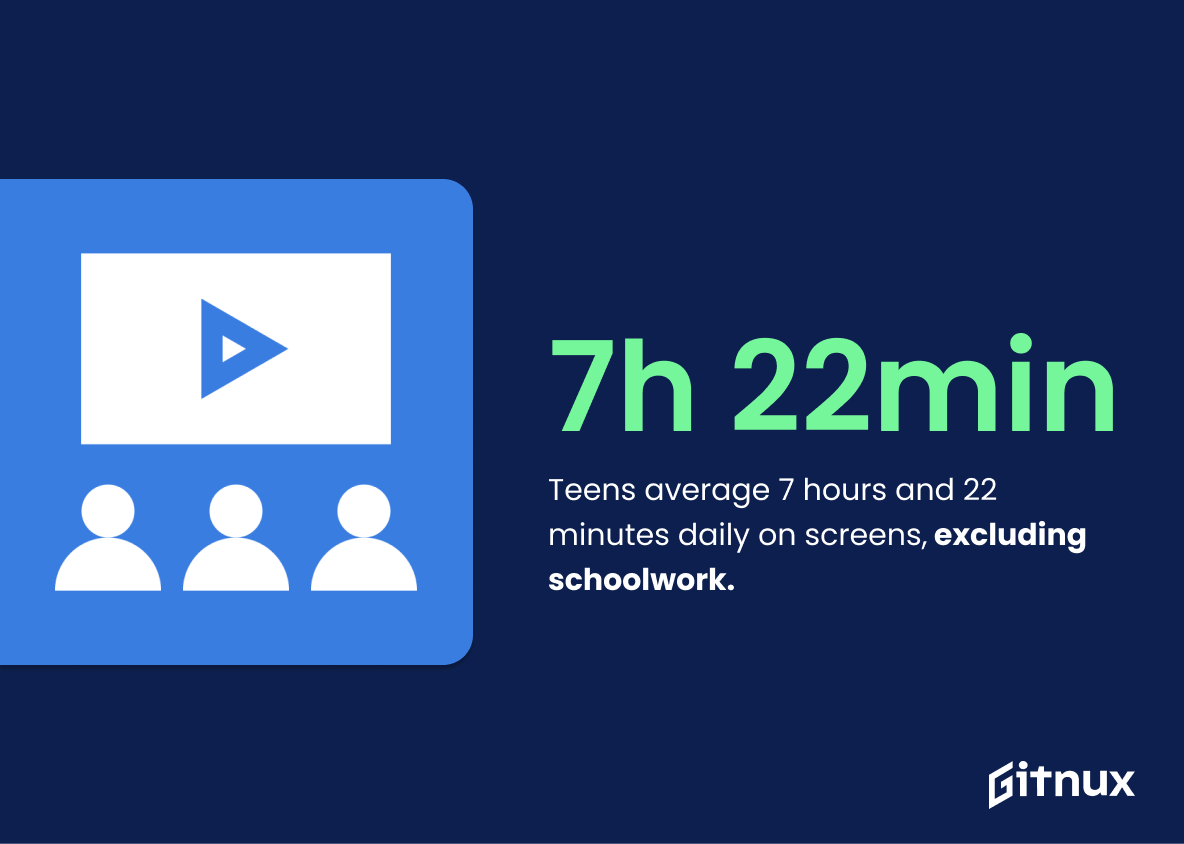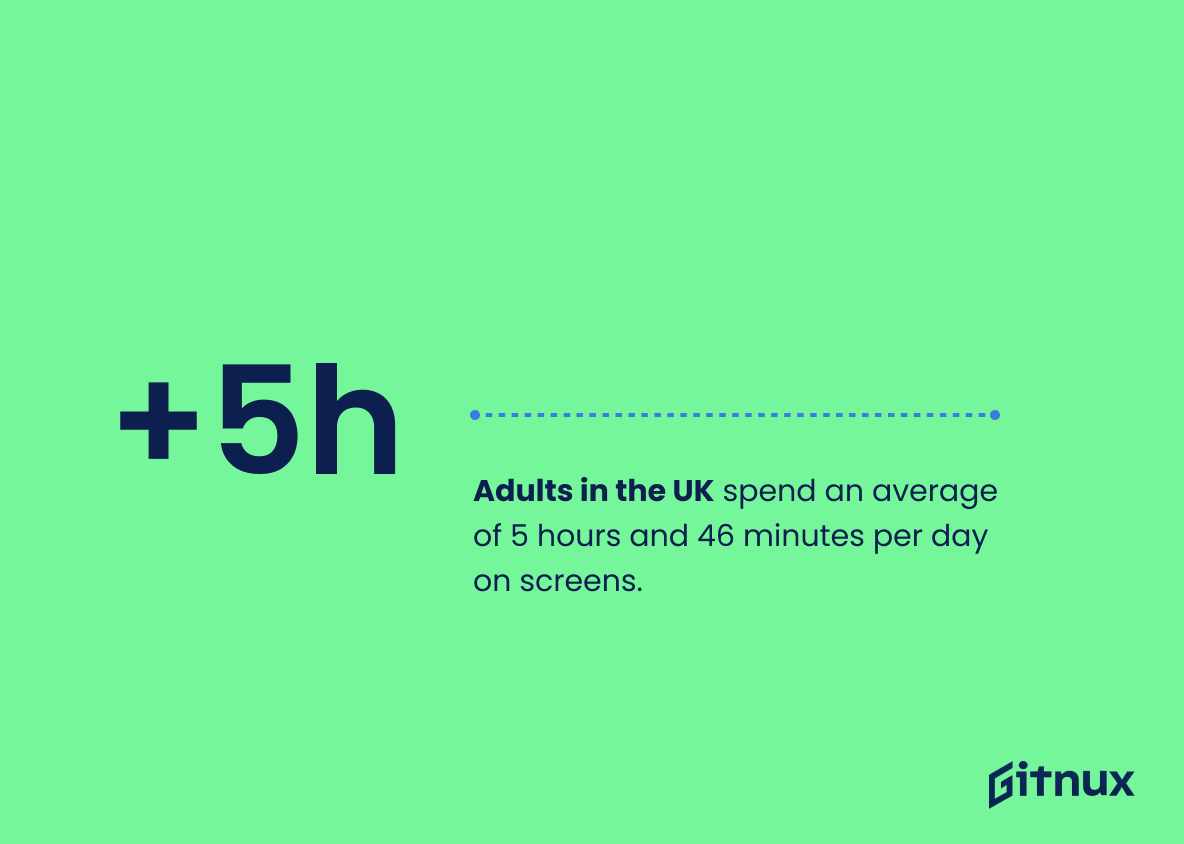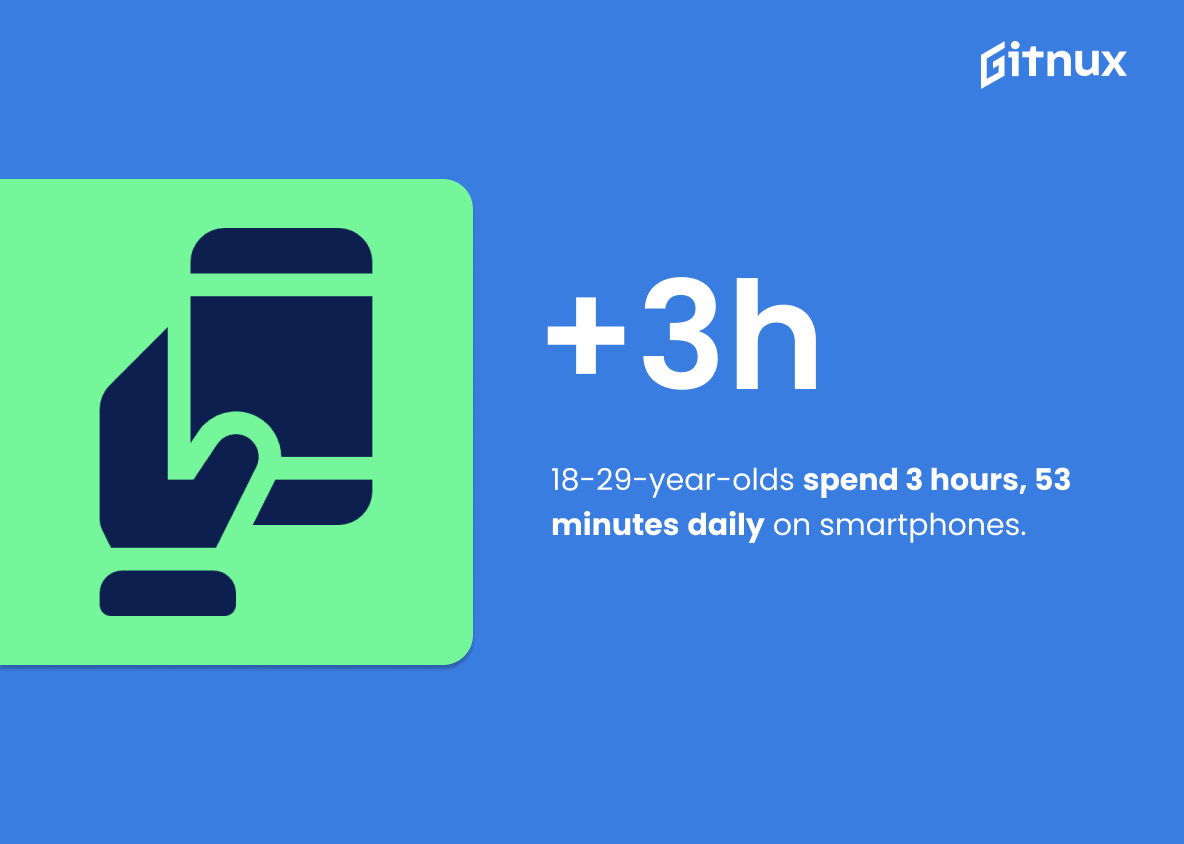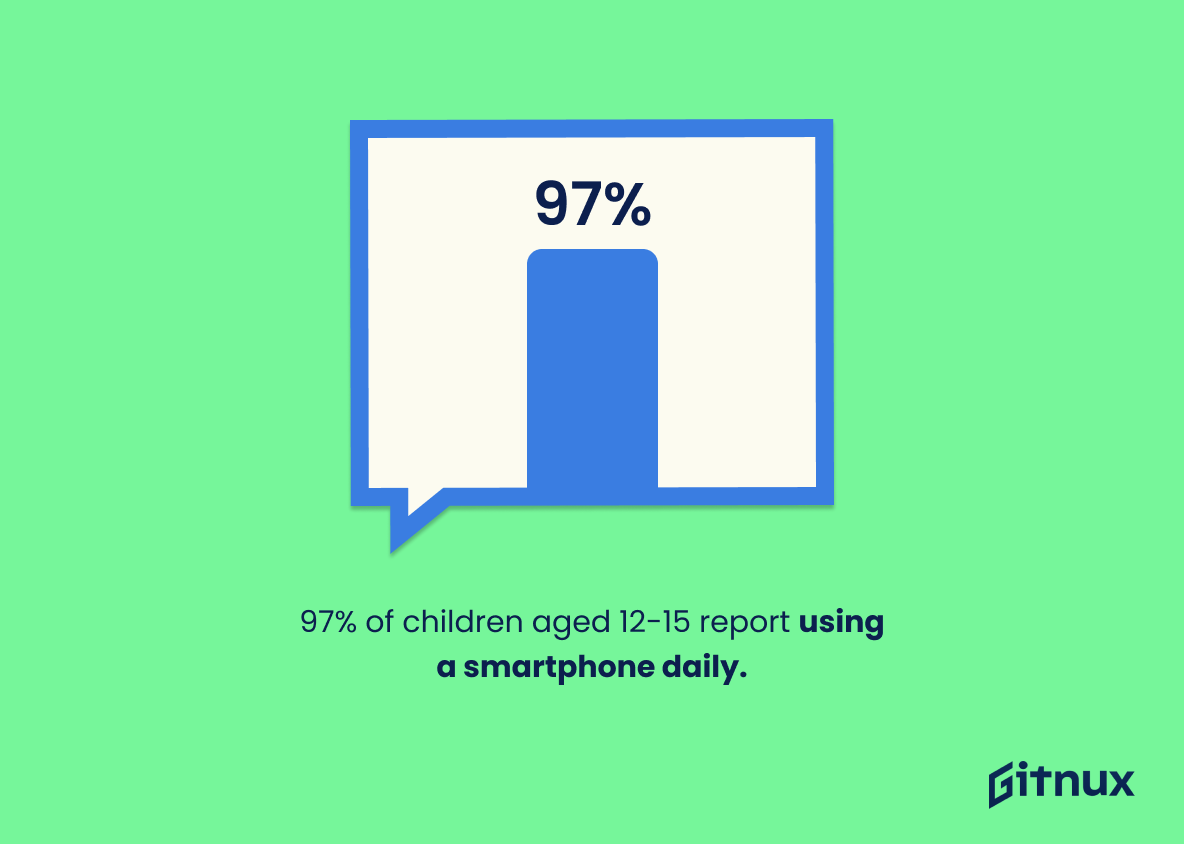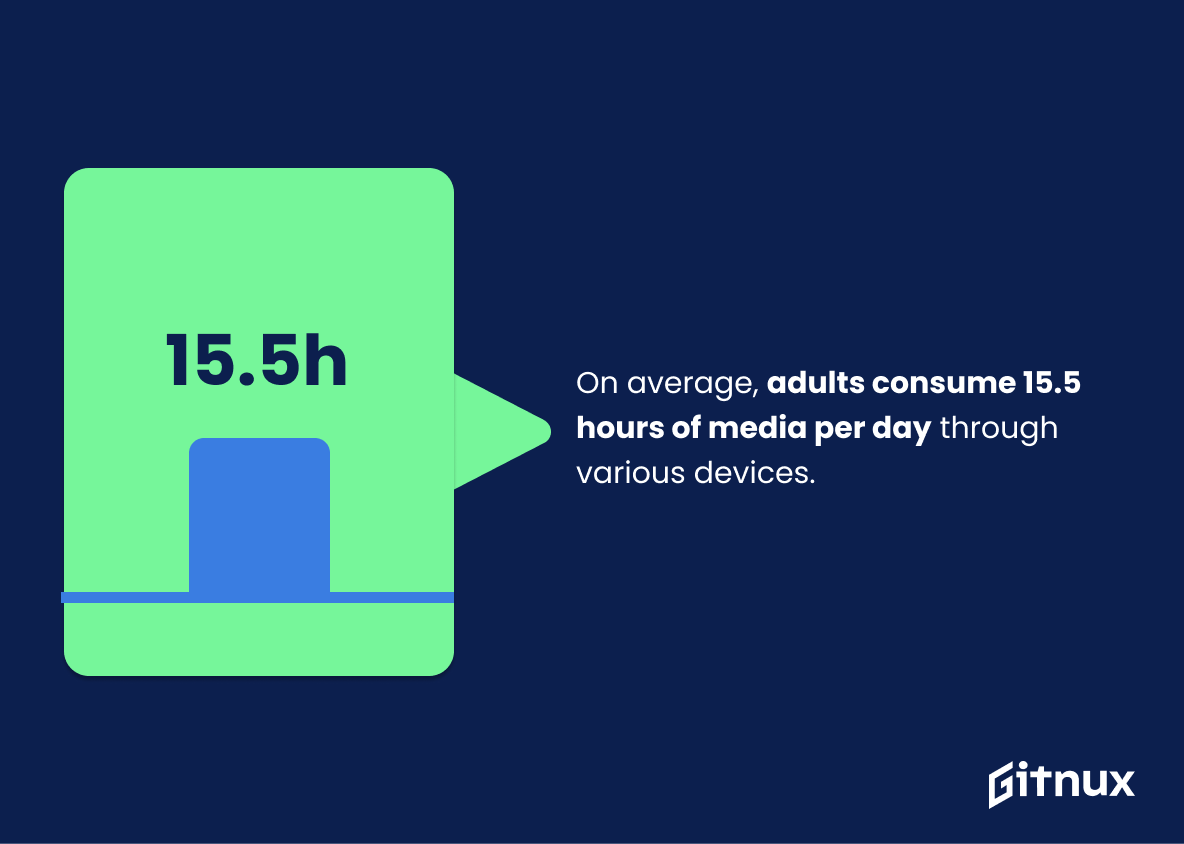Screen time is pivotal in our lives. Nielsen reports that American adults average 11 hours daily interacting with screens, while children aged 8-12 spend about 4.75 hours. Teenagers are also engaged, consuming 7.37 hours daily, excluding academic activities.
Social media usage significantly influences these stats, with 69% of US adults spending around 2 hours daily on sites like Facebook or Twitter. In the UK, the daily screen time shoots up to 5.77 hours, primarily through smartphones (checked 63 times/person) and computers (2.65 hours).
Interestingly, 29% of Americans overshoot their screen time, while 78% of parents feel their kids are overly dependent on technology. COVID-19 spurred a 33% increase in US adult screen consumption in 2020, and a 53% rise among youth due to remote learning. Seniors aged 60+ spend over half their leisure on digital platforms, with 65% reducing screen time before bed to improve sleep. Mobile phones account for 65% of internet traffic, with apps used twice as much as web browsing.
Living in a tech-heavy era, awareness of risks from excessive screen exposure is key, as is leveraging new technologies.
Screen Time Statistics Overview
Teens spend an average of 7 hours and 22 minutes per day on screens, not including time spent on screens for schoolwork.
This statistic is a stark reminder of the amount of time that teens are spending on screens, not even taking into account the time spent on screens for schoolwork. It paints a picture of a generation that is increasingly reliant on technology, and it serves as a warning that this reliance could have long-term consequences.
69% of American adults use social media sites, spending an average of 2 hours and 3 minutes per day.
This statistic is a telling indication of the prevalence of social media in the lives of American adults. It highlights the amount of time that is being devoted to these sites, with the average user spending over two hours a day on them. This is an important factor to consider when discussing screen time statistics, as it shows how much of the population is engaging with social media and how much of their day is devoted to it.
Adults in the UK spend an average of 5 hours and 46 minutes per day on screens.
This statistic is a stark reminder of the amount of time we spend in front of screens, and how it has become a part of our daily lives. It highlights the need to be mindful of our screen time and to take steps to reduce it, if necessary.
The average person checks their smartphone about 63 times per day.
This statistic is a stark reminder of how much time we spend on our phones, and how easily it can become a habit. It highlights the need to be mindful of our screen time and to be aware of how much time we are spending on our phones. It is an important statistic to consider when discussing screen time statistics.
29% of US adults say they spend more time on screens than they intend to.
This statistic is a telling indication of the power of screens to captivate and consume our attention. It suggests that, despite our best intentions, we are often unable to resist the lure of our devices and end up spending more time on them than we had planned. This highlights the need for greater awareness and understanding of the impact of screen time on our lives.
| Age Group | Average Screen Time Per Day |
|---|---|
| American Adults | 11 hours |
| Children (8-12 years) | 4 hours and 44 minutes |
| Teenagers | 7 hours and 22 minutes (excluding schoolwork) |
| US Adults (Social Media Usage) | 2 hours and 3 minutes |
| UK Adults | 5 hours and 46 minutes |
| US Adults (18-29 years) | 3 hours and 53 minutes (smartphone use) |
| Children (12-15 years) | Use smartphones daily |
| Seniors (60+ years) | More than half of their leisure time |
Adults between the ages of 18 and 29 spend the most time on their smartphones, spending an average of 3 hours and 53 minutes per day.
This statistic is a telling indication of the impact that smartphones have had on the lives of young adults. It highlights the amount of time that is being devoted to these devices, and the potential implications this could have on their lives. It is an important statistic to consider when discussing the effects of screen time on the lives of young adults.
97% of children aged 12-15 report using a smartphone daily.
This statistic is a powerful indicator of the prevalence of smartphones among children aged 12-15. It speaks to the ubiquity of smartphones in the lives of young people, and the potential impact of screen time on their development. This statistic is an important piece of the puzzle when it comes to understanding the effects of screen time on children’s lives.
51% of seniors aged 60 and older spend more than half of their daily leisure time on screens.
This statistic is a telling indication of the prevalence of screen time among seniors aged 60 and older. It highlights the fact that a majority of this age group is spending a significant portion of their leisure time on screens, which could have implications for their physical and mental health. This statistic is an important piece of information to consider when discussing the impact of screen time on seniors.
On average, adults consume 15.5 hours of media per day through various devices.
This statistic is a stark reminder of the amount of time we spend consuming media on a daily basis. It highlights the need to be mindful of our screen time and to be aware of how much time we are spending on our devices. It is a powerful reminder of the importance of taking breaks from our screens and engaging in activities that don’t involve technology.
An average adult spends around 2 hours 39 minutes per day on apps and 26 minutes on the mobile web.
This statistic is a telling indication of how much time people are spending on their phones. It highlights the fact that apps are dominating our digital lives, with more than double the amount of time spent on them compared to the mobile web. This is an important insight for anyone looking to understand the impact of screen time on our lives.
Conclusion
Screen time prevails globally among adults and children. American adults spend over 11 hours daily on screens; children aged 8-12 spend about 4 hours and 44 minutes. Teenagers also consume significant time, averaging 7 hours and 22 minutes daily, excluding schoolwork. Social media contributes significantly, with 69% of US adults spending an average of 2 hours and 3 minutes daily.
In the UK, daily screen usage averages 5 hours and 46 minutes. People check smartphones 63 times a day on average, and 29% admit to exceeding intended usage. Among 18-29 year olds, average mobile screen time is 3 hours and 53 minutes daily. Parents express concern, with 78% believing their children are too reliant on devices. In fact, 97% of 12-15 year olds and 51% of seniors over 60 use devices daily, the latter devoting over 50% of leisure time to such activity.
Handhelds dominate usage: video watching consumes 100 minutes daily, apps take up 2 hours and 39 minutes, and browsing webpages accounts for 26 minutes. Pandemic restrictions led to a 33% increase in US screen consumption in 2020, despite 88% of parents expressing concern about their child’s exposure and turning to digital babysitting.
In sum, our highly digitised society heavily depends on technology for entertainment and communication across all age groups.
References
0. – https://www.asurion.com
1. – https://www.ofcom.org.uk
2. – https://www.ebu.ch
3. – https://www.pewresearch.org
4. – https://www.emarketer.com
5. – https://www.commonsensemedia.org
6. – https://www.nielsen.com
